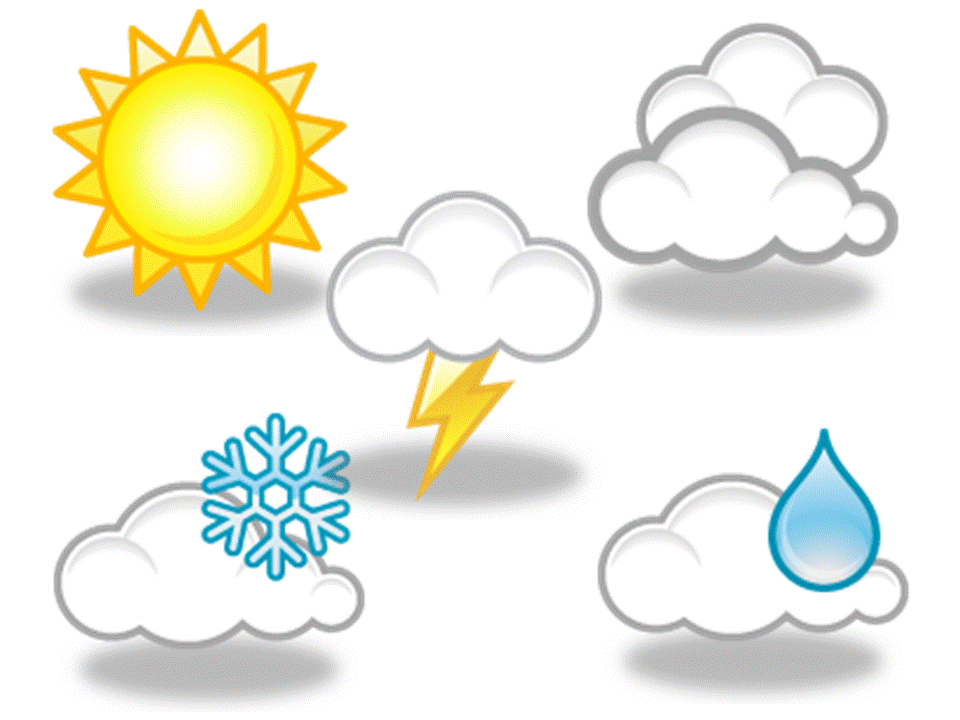Science News Video: Diversity in #tongues provides a way to study #evolution

An early interest in #reptile feeding behavior led evolutionary biologist Kurt Schwenk to study the tongues of lizards, amphibians and snakes. Like Charles Darwin's finches, the various forms and functions of #lizard tongues help piece together the story of how diversity of reptiles and amphibians evolved.
Published: 3rd Jan 2025 05:01:01 By: Science MagazineScience News Video: Did #dinosaurs have lips? #science

Researchers recently found evidence that dinosaurs may have had lips that covered their teeth like present-day lizards. Science journalist Rodrigo Pérez Ortega explains how they came to this conclusion.
Footage: Michele Dessi/Stocktrek Images/Science Source; Pictorial Press LTD/Alamy Stock Photo; Mark P. Witton
Published: 27th Dec 2024 05:00:04 By: Science MagazineScience News Video: Can a twice-a-year shot help end the HIV/AIDS epidemic

HIV infects more than a million people every year worldwide. While decades of research have led to effective treatments and pre-exposure prophylactic (PrEP) drugs that have dramatically reduced the impact of HIV/AIDS epidemic, completely wiping the virus out has remained out of reach. Lenacapavir, a new twice-yearly PrEP injection, may be the solution. Two clinical trials this year showed the drug can offer near complete protection from HIV infection, and the long-lasting effects mean daily pills could be a thing of the past, as long as it is accessible to populations who need it most. Science journalist Jon Cohen, physician-scientist Linda-Gail Bekker, and biochemist Wesley Sundquist describe the history of HIV/AIDS prevention and the unique mechanism that led lenacapavir to be named the 2024 Breakthrough of the Year.
Read more about the Breakthrough of the Year: https://www.science.org/boty2024
Published: 12th Dec 2024 07:00:40 By: Science MagazineScience News Video: How oil-eating #bacteria break droplets down #science #biology

After an oil spill, bacteria like Alcanivorax borkumensis can help the cleanup process, consuming oil and breaking it down. A group of biophysicists have observed how a biofilm forms around the oil and push and pull the oil's surface into branching tubes.
Watch the full-length video: https://www.youtube.com/watch?v=UwPVeiMYi-M
Read the paper: https://www.science.org/doi/10.1126/science.adf3345
Footage: ©Greenpeace, Omarova et al., ACS Sustainable Chem. Eng 2019, BlackBoxGuild/Pond5,
Research: Prasad et al., Science 2024
Music: Blipper/Podington Bear
Published: 6th Dec 2024 05:00:31 By: Science MagazineScience News Video: Marine snow mucus might mean slower carbon capture #science #oceanography #carboncycle

Marine snow is the dead, discarded, and sloughed off organic matter that floats down to the sea floor like snowflakes. Originating from living organisms at the surface, then dropping down to the depths, it's an important part of how the ocean captures carbon from the atmosphere. However, by analyzing the sinking patterns of individual marine snowflakes, researchers found that their mucus trails slow their sinking speed, meaning this process captures carbon much slower than previously thought.
Published: 29th Nov 2024 05:00:08 By: Science Magazine
Science News Video: What Would Happen If We Just Kept Digging?

The deepest hole we've ever been able to dig is just 0.2 percent of the way to the center of the Earth. What would we encounter if we could drill all the way?
Cleo Abram video:
https://www.youtube.com/watch?v=N0-ZZ9pLyWw
Correction:
5:13 We mislabeled these! These are ammonite fossils, not trilobite fossils.
Hosted by: Hank Green (he/him)
----------
Support us for $8/month on Patreon and keep SciShow going!
https://www.patreon.com/scishow
Or support us directly: https://complexly.com/support
Join our SciShow email list to get the latest news and highlights:
https://mailchi.mp/scishow/email
----------
Huge thanks go to the following Patreon supporters for helping us keep SciShow free for everyone forever: Toyas Dhake, Spilmann Reed, Gizmo, Garrett Galloway, Friso, DrakoEsper , Kenny Wilson, Lyndsay Brown, Jeremy Mattern, Jaap Westera, Harrison Mills, Jeffrey Mckishen, Matt Curls, Eric Jensen, Chris Mackey, Adam Brainard, Piya Shedden, Alex Hackman, Kevin Knupp, Chris Peters, Kevin Bealer, Jason A Saslow
----------
Looking for SciShow elsewhere on the internet?
SciShow Tangents Podcast: https://scishow-tangents.simplecast.com/
TikTok: https://www.tiktok.com/@scishow
Twitter: http://www.twitter.com/scishow
Instagram: http://instagram.com/thescishow
Facebook: http://www.facebook.com/scishow
#SciShow #science #education #learning #complexly
----------
Sources: https://docs.google.com/document/d/e/2PACX-1vS3SZAuVNQ_djjUoQrvxwXdEOI-oNIzE_C2GaBEZLydoHyBKW4zPtEP-xMRkxiPqSccM0a34FP4QXTh/pub
Published: 3rd Jan 2025 05:00:14 By: SciShowScience News Video: Why Miners Are Flocking Back to This Abandoned Mine

There's a town in northern Mexico called Ojuela that's got a rich history of valuable mining industry, but nowadays is largely deserted. But it's getting a new, second life thanks to a type of mineral forming process fittingly called secondary transformation, and the start of this story is a crystal called adamite, which happens to be this month's SciShow Rocks Box mineral!
Hosted by: Stefan Chin (he/him)
----------
Support us for $8/month on Patreon and keep SciShow going!
https://www.patreon.com/scishow
Or support us directly: https://complexly.com/support
Join our SciShow email list to get the latest news and highlights:
https://mailchi.mp/scishow/email
----------
Huge thanks go to the following Patreon supporters for helping us keep SciShow free for everyone forever: Toyas Dhake, Spilmann Reed, Gizmo, Garrett Galloway, Friso, DrakoEsper , Kenny Wilson, Lyndsay Brown, Jeremy Mattern, Jaap Westera, Harrison Mills, Jeffrey Mckishen, Matt Curls, Eric Jensen, Chris Mackey, Adam Brainard, Piya Shedden, Alex Hackman, Kevin Knupp, Chris Peters, Kevin Bealer, Jason A Saslow
----------
Looking for SciShow elsewhere on the internet?
SciShow Tangents Podcast: https://scishow-tangents.simplecast.com/
TikTok: https://www.tiktok.com/@scishow
Twitter: http://www.twitter.com/scishow
Instagram: http://instagram.com/thescishow
Facebook: http://www.facebook.com/scishow
#SciShow #science #education #learning #complexly
----------
Sources: https://docs.google.com/document/d/e/2PACX-1vSpPE2Q54Lzjy2qTtRekvQdJibT1hv4fwGBtlW4h6hjObbJon04civX3UnYMmbCbNIwqqNCyp85gUu_/pub
Published: 2nd Jan 2025 05:00:00 By: SciShowScience News Video: The Deadliest Stuff on Earth | Compilation

The Plague! Poisonous trees! Exploding lakes! Here are a few of the deadliest things we've covered at SciShow over the years.
Hosted by: @NotesByNiba
----------
Support us for $8/month on Patreon and keep SciShow going!
https://www.patreon.com/scishow
Or support us directly: https://complexly.com/support
Join our SciShow email list to get the latest news and highlights:
https://mailchi.mp/scishow/email
----------
Huge thanks go to the following Patreon supporters for helping us keep SciShow free for everyone forever: Toyas Dhake, Spilmann Reed, Gizmo, Garrett Galloway, Friso, DrakoEsper , Kenny Wilson, Lyndsay Brown, Jeremy Mattern, Jaap Westera, Harrison Mills, Jeffrey Mckishen, Matt Curls, Eric Jensen, Chris Mackey, Adam Brainard, Piya Shedden, Alex Hackman, Kevin Knupp, Chris Peters, Kevin Bealer, Jason A Saslow
----------
Looking for SciShow elsewhere on the internet?
SciShow Tangents Podcast: https://scishow-tangents.simplecast.com/
TikTok: https://www.tiktok.com/@scishow
Twitter: http://www.twitter.com/scishow
Instagram: http://instagram.com/thescishow
Facebook: http://www.facebook.com/scishow
#SciShow #science #education #learning #complexly
----------
Sources:
https://www.youtube.com/watch?v=o8AonDeS8HY
https://www.youtube.com/watch?v=4fkcTA7YX44
https://www.youtube.com/watch?v=mtVGsiIjfjg
https://www.youtube.com/watch?v=iJ2jDPgvbTY
https://www.youtube.com/watch?v=u7xlGcLGTu8
https://www.youtube.com/watch?v=rTws5K9Ai4o
https://www.youtube.com/watch?v=hSsKgM8-SfE
https://www.youtube.com/watch?v=KuHL7hiFTnc
https://www.youtube.com/watch?v=J1u460b_hrI
https://www.youtube.com/watch?v=yniErnqqvuI
Published: 1st Jan 2025 05:00:08 By: SciShowScience News Video: These Are The Coolest Fossils From 2024

From a fancy-frilled ceratopsian to a possible new biggest snake ever and something called a giga goose, there were some pretty amazing giant fossils announced in 2024. Plus, Kallie from our sister channel Eons reminds us to give some love to the little fossils, too.
Hosted by: Hank Green (he/him)
----------
Support us for $8/month on Patreon and keep SciShow going!
https://www.patreon.com/scishow
Or support us directly: https://complexly.com/support
Join our SciShow email list to get the latest news and highlights:
https://mailchi.mp/scishow/email
----------
Huge thanks go to the following Patreon supporters for helping us keep SciShow free for everyone forever: Toyas Dhake, Spilmann Reed, Gizmo, Garrett Galloway, Friso, DrakoEsper , Kenny Wilson, Lyndsay Brown, Jeremy Mattern, Jaap Westera, Harrison Mills, Jeffrey Mckishen, Matt Curls, Eric Jensen, Chris Mackey, Adam Brainard, Piya Shedden, Alex Hackman, Kevin Knupp, Chris Peters, Kevin Bealer, Jason A Saslow
----------
Looking for SciShow elsewhere on the internet?
SciShow Tangents Podcast: https://scishow-tangents.simplecast.com/
TikTok: https://www.tiktok.com/@scishow
Twitter: http://www.twitter.com/scishow
Instagram: http://instagram.com/thescishow
Facebook: http://www.facebook.com/scishow
#SciShow #science #education #learning #complexly
----------
Sources: https://docs.google.com/document/d/e/2PACX-1vS0yhGnBbJ6ip9B0Rq7zn89Vjt1J8Q5hbi530zjKf_gDZeywlZEKWLmCufahO7jCvvQA4rGk1rvdkn7/pub
Published: 31st Dec 2024 05:00:34 By: SciShowScience News Video: The Brightest Object in the Universe is a Black Hole

Thank you to Bombas for sponsoring this video! One Purchased = One Donated, so head to https://bombas.com/scishow and use code SCISHOW at checkout for 20% off your first purchase.
In 2024, astronomers announced they'd discovered the brightest (or, technically, the most luminous) object in the known universe. And it's a cosmic engine powered by the hungriest black hole in the known universe.
Hosted by: Stefan Chin (he/him)
----------
Support us for $8/month on Patreon and keep SciShow going!
https://www.patreon.com/scishow
Or support us directly: https://complexly.com/support
Join our SciShow email list to get the latest news and highlights:
https://mailchi.mp/scishow/email
----------
Huge thanks go to the following Patreon supporters for helping us keep SciShow free for everyone forever: Toyas Dhake, Spilmann Reed, Gizmo, Garrett Galloway, Friso, DrakoEsper , Kenny Wilson, Lyndsay Brown, Jeremy Mattern, Jaap Westera, Harrison Mills, Jeffrey Mckishen, Matt Curls, Eric Jensen, Chris Mackey, Adam Brainard, Piya Shedden, Alex Hackman, Kevin Knupp, Chris Peters, Kevin Bealer, Jason A Saslow
----------
Looking for SciShow elsewhere on the internet?
SciShow Tangents Podcast: https://scishow-tangents.simplecast.com/
TikTok: https://www.tiktok.com/@scishow
Twitter: http://www.twitter.com/scishow
Instagram: http://instagram.com/thescishow
Facebook: http://www.facebook.com/scishow
#SciShow #science #education #learning #complexly
----------
Sources: https://docs.google.com/document/d/e/2PACX-1vTReCGJREELUGDQdMoNS-eZTVfSDIhiSkCfxxrysyg2d5ugErn0xTDei66JfYxlYjtkI6ithqfBLCub/pub
Published: 30th Dec 2024 05:00:27 By: SciShow
Science News Video: Watch an Ethiopian wolf slurp nectar from a flower | Science News

An Ethiopian wolf (Canis simensis) laps up nectar from three Ethiopian red hot poker flowers (Kniphofia foliosa) in the country’s Bale Mountains National Park. Anecdotal reports from researchers monitoring the wolves suggest that they hunt rodents during the day and slurp nectar in the afternoon, says wildlife biologist Sandra Lai, almost like the carnivores are getting dessert.
Read more:
Video Credit: S. Lai et al/Ecology
Published: 3rd Jan 2025 09:12:49 By: Science NewsScience News Video: Watch an electronic tattoo get applied to a person’s head | Science News

After mapping a person’s head shape, a microjet printer sprays electronic-tattoo ink onto precise spots on a volunteer’s scalp (shown here at four times actual speed). The ink can pick up electrical signals from the brain about as well as standard electrodes but without some of the drawbacks, a new study reports.
Read more: https://www.sciencenews.org/article/vampire-bats-treadmills-metabolism
Video: Nanshu Lu
Published: 3rd Jan 2025 09:12:41 By: Science NewsScience News Video: Here’s what orcas preying on a whale shark looks like | Science News

Videos captured by ecotourists are revealing for the first time how orcas prey on the world’s biggest fish, whale sharks. Shown here, orcas swim around a whale shark they have attacked, then one orca, nicknamed Moctezuma, approaches the whale shark, which has been flipped over and floats upside down.
Read more: https://www.sciencenews.org/article/vampire-bats-treadmills-metabolism
Video: Eduardo Miranda
Published: 3rd Jan 2025 09:12:39 By: Science NewsScience News Video: See a vampire bat treadmill workout | Science News

Researchers put vampire bats through their paces to discover what fuels their metabolism. After a fine meal of cow blood, bats were put into a closed mini-gym with a moving floor. As the bats walked and then — as the treadmill sped up — ran, researchers checked bat breath for signs that amino acids from the cow blood were getting metabolized in the workout. Unlike most mammals burning carbs and fats during exercise, bats metabolize more amino acids.
Read more: https://www.sciencenews.org/article/vampire-bats-treadmills-metabolism
Video Credit: Giulia Rossi
Published: 6th Nov 2024 04:39:39 By: Science NewsScience News Video: See how a male Victoria’s riflebird courts a female | Science News

A sit-and-wait flirter, a male riflebird (left in the first clip) puts on a high-energy — and noisy — show for a female visiting his perch. The most flexible wrist joints yet measured in a bird let him curve his dark wings like a flaring cape. Opening and closing his beak, as seen in the first slow motion clip, adds flashes of gold from the mouth and throat lining. Between flashes, he closes his beak to scrape it over the spread feathers for the show’s thwackity-thwack soundtrack, as seen in the second slow motion clip. Scientists previously thought the birds somehow clapped their wings together to make the sounds.
Video: Thomas MacGillavry and Joris De Raedt
Published: 16th Oct 2024 03:27:53 By: Science News







































